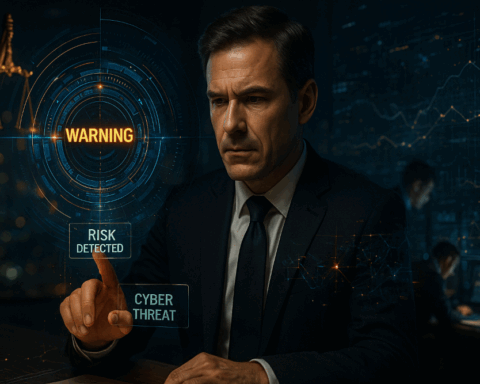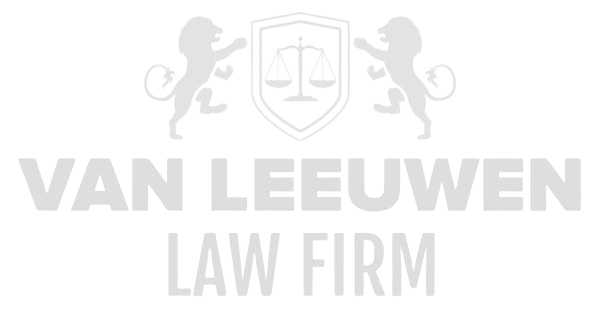In today’s environment, where oversight is constant, sanctions are stricter, and enforcement more intensive than ever before, securing business processes and organizational structures is no longer considered a strategic choice but an unavoidable necessity. Accusations of financial mismanagement, fraud, bribery, money laundering, corruption, or violations of international sanctions are no longer theoretical risks but acute threats that can undermine the very existence of a company. The impact of such accusations extends beyond financial penalties or criminal prosecution; it also undermines the foundations of trust and reputation that are essential for the survival and success of the organization. Failure to robustly secure internal procedures and systems opens the door to operational disruptions that can cause irreparable damage, both legally and commercially.
Protecting an organization against these threats requires an integrated and thorough approach in which legal, technical, and organizational measures are inseparably intertwined. It is not merely about implementing isolated controls or guidelines but about creating a layered system that functions preventively, detectively, and responsively. Within this system, internal controls must form an unwavering barrier against manipulation, while sensitive business information must be protected from unauthorized access or misuse under all circumstances. Furthermore, there must be a clear and unambiguous protocol for acting on suspected misconduct, with every step carefully documented and accounted for. This integrated approach must also be dynamic, continuously aligned with the latest regulations, case law, and international standards, so that the organization remains up-to-date and resilient against legal and reputational risks arising from changing circumstances.
Robust Internal Control Mechanisms
The foundation of any effective protection against accusations of financial mismanagement and fraud is laid by robust internal control mechanisms. These mechanisms should consist of carefully designed internal audits that are not merely formal in nature but conduct deep, multidimensional analyses of financial processes, business activities, and regulatory compliance. Only through periodic and thorough evaluation of the reliability and effectiveness of these processes can it be determined whether they withstand manipulation and errors that may lead to serious legal and reputational damage. The absence of such evaluations, or their inadequate execution, not only creates risks but also sends a troubling signal to regulators, shareholders, and the market.
Establishing these controls requires a sharp focus on both detecting weak links and strengthening existing processes. This includes systematically recording and analyzing transactions, monitoring deviations from expected patterns, and validating compliance with internal guidelines and external laws. Furthermore, the audit process must be carried out by independent officials or external parties who possess the necessary objectivity and expertise to critically assess the organization. Reporting findings should not be reduced to a mere formal moment but must result in concrete recommendations and improvements that are implemented promptly to mitigate structural risks.
The organizational discipline surrounding internal control mechanisms also demands a culture in which identifying and reporting deviations is encouraged and valued. A lack of openness and transparency can lead to internal controls becoming mere paper tigers, without real impact on preventing malpractice. Therefore, controls must be embedded in daily practice and supported by adequate employee training, clearly explaining why controls are crucial and what the consequences of ignoring them can be. Only then does a real barrier arise against the escalating danger of financial mismanagement and fraudulent activities.
Fraud and Corruption Prevention Programs
An essential element in preventing legal escalations and reputational damage caused by fraudulent and corrupt behavior is the implementation of effective fraud and corruption prevention programs. These programs must go beyond merely formulating policies and codes of conduct; they must be translated into concrete, applicable guidelines embedded in the organization’s DNA. By establishing a clear anti-fraud policy, the framework is set within which all employees, from executive level to operational layers, take responsibility for preventing and combating unauthorized behavior.
The success of such programs partly depends on systematically training and raising awareness among employees. This training must be intensive, frequent, and practical so that employees not only gain theoretical knowledge but also learn to recognize signals that may indicate fraud or corruption. Through case studies, simulations, and interactive sessions, a climate of alertness and professional integrity can be fostered in which employees feel empowered to act and report without fear of retaliation.
Furthermore, the prevention program must include continuous evaluation and adjustment, integrating lessons learned from incidents and investigations to increase effectiveness. Prevention thereby becomes a dynamic process rather than a static policy document. Organizations investing in such intensive prevention programs not only build their legal resilience but also strengthen the trust of stakeholders and the broader market in their integrity and governance.
Protection of Sensitive Data and Business Information
Protecting sensitive data and business information is a cornerstone in combating the risks associated with financial mismanagement, fraud, and other integrity incidents. In an era where digital information is the lifeblood of organizations, every data breach or unauthorized access represents a direct threat to continuity and reputation. Applying thorough data classification is crucial: not all information deserves the same level of protection. By distinguishing between confidential, internal, and public data, targeted policies can be developed that correspond to the importance and sensitivity of the information.
In addition to classification, effective access management is indispensable. Only employees with a strictly necessary need for certain information should have access, with this right regularly reviewed and adjusted. Advanced technical measures such as encryption, multi-factor authentication, and real-time monitoring of access activities must be deployed to prevent unauthorized access as much as possible. It is also essential that these technical measures are regularly tested for effectiveness and adapted to the latest cyber threats.
Protection against data breaches and cyberattacks also requires broad organizational awareness. Not only the IT department but all levels of the organization must understand the implications of data protection. Incident response plans must be ready to act swiftly and adequately in the event of a data breach, aiming to limit damage and comply with legal notification obligations. Only with an integrated approach, encompassing technical, organizational, and human factors, can the organization build a robust barrier against the devastating consequences of data breaches and cyber incidents.
Segregation of Duties and Responsibilities
A fundamental principle to prevent conflicts of interest and misuse within organizations is the strict segregation of duties and responsibilities. This principle must be applied unwaveringly in all critical processes where financial management, compliance, and decision-making intersect. By establishing clear task divisions, the system of ‘checks and balances’ is strengthened, significantly reducing the chance of fraud or unwanted influence.
In practice, it is not only about formalizing job descriptions but also about actively monitoring and enforcing compliance with these divisions. Regular audits, for example by internal auditors or compliance officers, are required to ensure that no single person or entity within the organization exercises a disproportionate degree of control or influence without adequate counterbalance. This discipline is essential to detect and correct vulnerabilities in the system early.
Failing to maintain segregation of duties and responsibilities not only increases the risk of mismanagement but also raises red flags for regulators and external auditors. It signals a lack of managerial maturity and can lead to severe sanctions and reputational damage. Organizations that rigorously uphold these principles lay a foundation not only for compliance but also for strengthening the confidence of external stakeholders in their governance structure.
Effective Whistleblower Policies and Reporting Systems
Implementing an effective whistleblower policy is crucial for organizations seeking to protect themselves against allegations of financial mismanagement, fraud, bribery, money laundering, corruption, or violations of international sanctions. Such a policy must provide secure, anonymous, and easily accessible channels through which employees and third parties can report suspected misconduct without fear of retaliation. The protection of whistleblowers is not a discretionary add-on but a fundamental component of the integrity infrastructure, as trust in the reporting system determines its effectiveness.
Ensuring anonymity and guaranteeing that reports are taken seriously contributes to a culture of openness and accountability. It is imperative that each report is handled carefully and independently by designated officers or a dedicated compliance department. Clear protocols and transparency regarding the progress of investigations strengthen employee confidence and prevent reports from being unjustly suppressed, which could otherwise cause reputational damage and operational disruptions.
Additionally, whistleblower policies must fit within a broader framework of integrity oversight and risk management. This means that reporting systems are linked to preventive and corrective measures, with periodic evaluations of how reports are handled and what lessons are learned. In this way, an organization can continuously enhance its internal resilience against misconduct, thereby preventing legal escalations and reputational harm.
Compliance Monitoring and Real-Time Risk Analysis
In addressing integrity risks and preventing serious legal complications, the use of advanced compliance monitoring and real-time risk analysis has become indispensable. Through data analysis, machine learning, and artificial intelligence, deviations, irregularities, and potential fraudulent patterns can be detected early. This enables organizations to act not merely reactively but proactively, identifying and mitigating risks before they escalate into significant problems.
Applying these technologies requires an integrated approach that consolidates and analyzes multiple data sources. Transaction records, user activities, communication patterns, and external sources can collectively provide insights into potential integrity issues. By linking these signals to business rules and risk profiles, a dynamic system emerges that remains continuously vigilant and can intervene immediately when thresholds are exceeded.
It is essential to recognize that real-time monitoring is not merely a technical process but an integral part of the organization’s governance structure. The results of analyses must be clearly communicated to management and the compliance department, who can then initiate appropriate follow-up actions. This creates a powerful synergy between technology and human oversight, which is indispensable in combating complex legal and reputational risks.
Continuity and Crisis Management within Processes
Continuity and crisis management are essential components of organizational resilience, particularly in situations where allegations of financial mismanagement, fraud, or corruption could severely disrupt operations. A well-developed continuity plan enables an organization to minimize operational disruptions resulting from incidents and to recover swiftly. This encompasses not only the safeguarding of core business activities but also the protection of critical information, maintenance of client relationships, and limitation of reputational damage.
Developing such plans requires a thorough analysis of potential risks and vulnerabilities within processes. This risk inventory forms the basis for scenarios addressing various incidents, including internal fraud, data breaches, or legal investigations. Through simulations, exercises, and employee training, both management and operational teams can be prepared for unexpected events, thereby enhancing responsiveness and decision-making in crisis situations.
Furthermore, continuity and crisis management must be embedded within the broader governance and compliance structure. Responses to incidents must be rapid, coordinated, and transparent, with all relevant internal and external stakeholders informed in a timely manner. This not only ensures operational resilience but also strengthens the confidence of regulators, clients, and the market in the organization’s ability to manage complex legal challenges.
Integration of External and Internal Audits
Regular and comprehensive audits conducted by both internal specialists and independent external parties are indispensable tools for safeguarding the integrity of business processes and minimizing legal risks. These audits provide an impartial assessment of the effectiveness of controls, compliance with regulations, and the proper implementation of policies and procedures. In environments where allegations of fraud, corruption, or sanctions violations are prevalent, this dual layer of oversight is essential to avoid blind spots.
External auditors bring an independent perspective and expertise often unavailable internally, which is critical in uncovering hidden risks or deficiencies. Simultaneously, the internal audit function provides continuous monitoring and rapid follow-up on findings, enabling the organization to implement corrective measures promptly and foster a culture of continuous improvement.
The effectiveness of audit integration depends on the extent to which findings are translated into concrete improvements. This requires a systematic approach where recommendations are acted upon, improvement plans are implemented, and the effectiveness of measures is regularly evaluated. Only in this way can audits achieve their purpose: strengthening the organization’s resilience against legal escalations and ensuring sustainable compliance.
Culture of Responsibility and Ethics
Creating and maintaining a culture in which responsibility and ethics are central constitutes the ultimate defense against allegations of financial mismanagement, fraud, corruption, and related integrity incidents. Leadership plays a pivotal role in this endeavor. Executives and senior management must lead by example, not only enforcing rules but actively promoting ethical behavior and transparency through both words and actions. This exemplary conduct sets the tone for the entire organization and heavily influences the integrity climate.
Beyond leadership, fostering open communication and creating a safe environment in which employees feel heard and supported is essential. Employees should be encouraged to discuss potential problems or unethical behavior without fear of negative consequences. Achieving this requires structural investments in training, awareness programs, and trusted channels that contribute to a shared sense of ownership over organizational integrity.
An ethical culture must also be visible across all organizational levels and embedded in policy documents, performance evaluation criteria, and reward structures. By linking accountability to performance indicators and ensuring transparency, an organization can transform integrity from an abstract concept into a concrete daily practice, minimizing legal risks and sustainably protecting its reputation.









